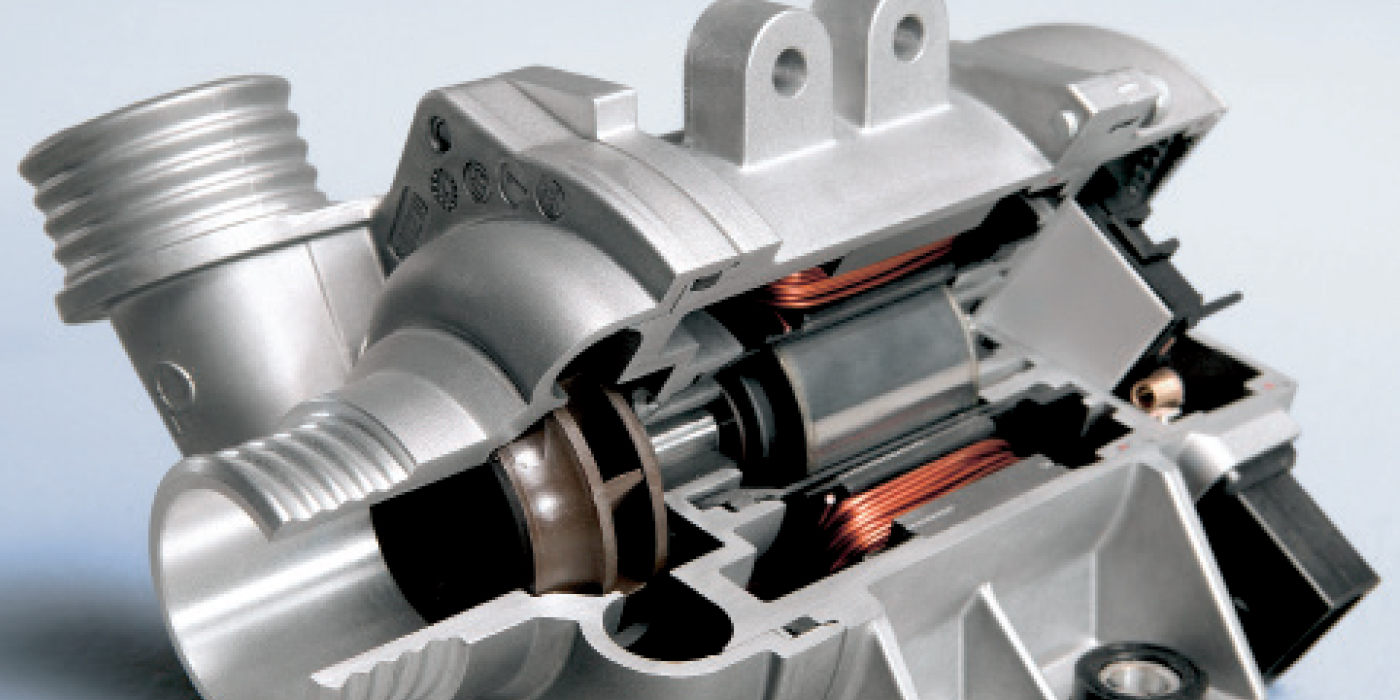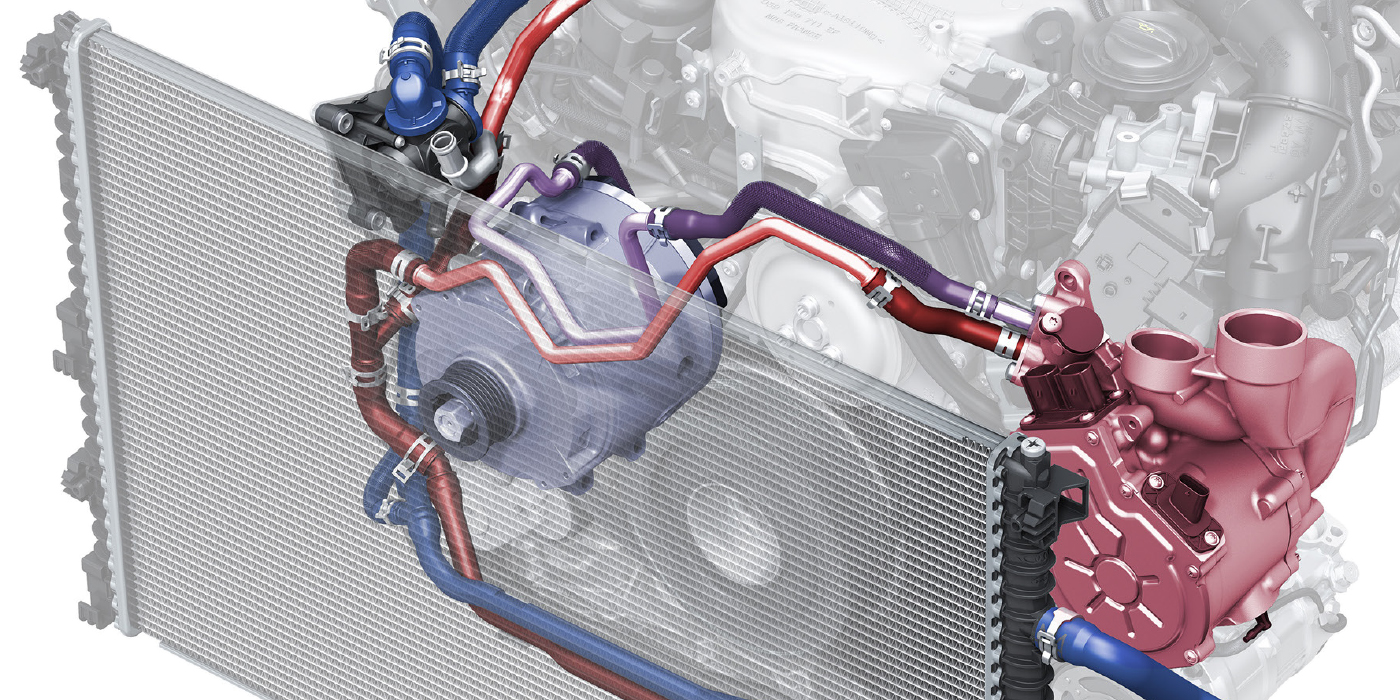If the coolant reservoir appears to be leaking, the technician should also check these possible leak sources before replacing the reservoir.
• May be caused by the coolant hose (1) between the coolant reservoir and the radiator or the coolant hose (2) between the coolant reservoir and the engine, which may have internal cracks (see Fig. 1).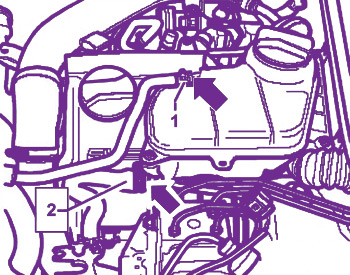
• Internal cracks can cause coolant to get inside the coolant hose material and leak from connections to the coolant reservoir (See Fig. 1, arrows) due to the capillary effect.
The following tools (or equivalents) are required to complete the diagnosis: VAG 1274 Cooling System Tester, VAG 1274/8 Adapter and VAG 1274/9 Adapter.
Applicable Vehicles:
2001–’06 – All models, all engines
Repair Procedure:
Before replacing the coolant reservoir:
• Check if the coolant hose (1) between the coolant reservoir and the radiator is leaking at the connection to the coolant reservoir (see Fig. 1).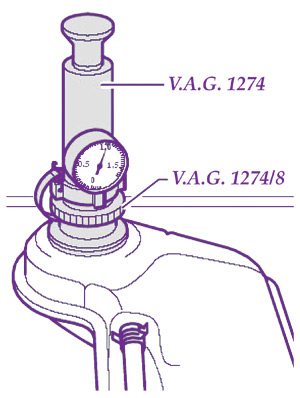
• Replace the coolant hose, if necessary.
• Run the engine or drive the vehicle until the coolant reaches a temperature of 80° C (176° F).
Checking for leaks in the coolant reservoir:
• Remove the filler cap on the expansion tank.
• Install tester VAG 1274 and adapter VAG 1274/8 (or equivalents) on the expansion tank (see Fig. 2).
• Build up a pressure of approx. 1.0 bar with a hand pump on the tester.
• If this pressure is not maintained:
a. Trace and repair any leaks.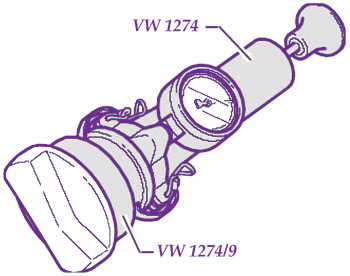
b. Check if a coolant leak still exists around the coolant reservoir.
Checking pressure relief valve in filler cap:
• Screw the filler cap onto the tester with adapter VAG 1274/9 (or equivalent) (see Fig. 3).
• Install the hand pump and build up pressure.
• The pressure relief valve should open at 1.4 to 1.6 bar.
• Replace the filler cap, if necessary.
Do not replace the coolant reservoir if there is no further coolant leak detected around the coolant reservoir.
Written by Eric Seifert, automotive technical editor, ALLDATA.











